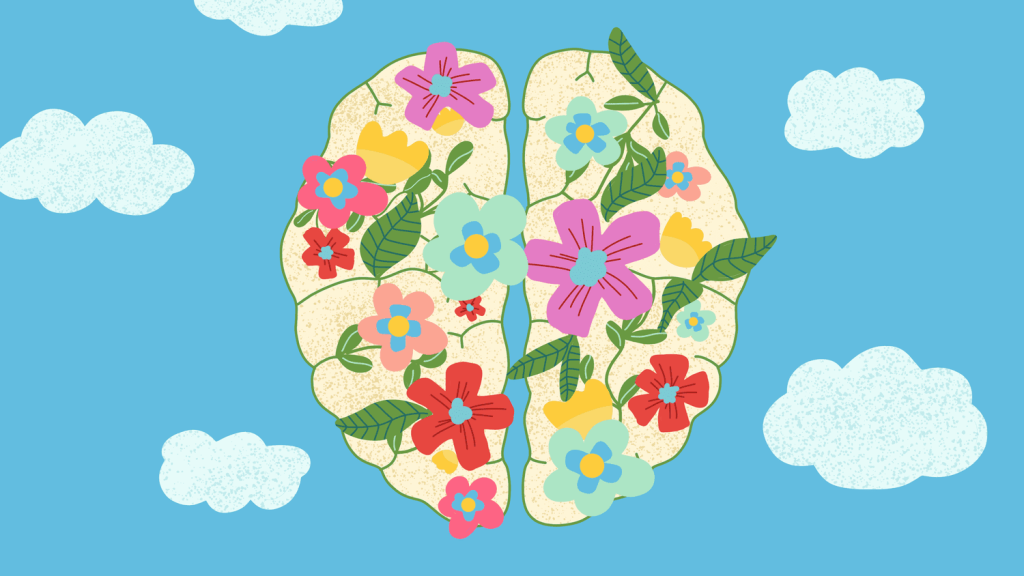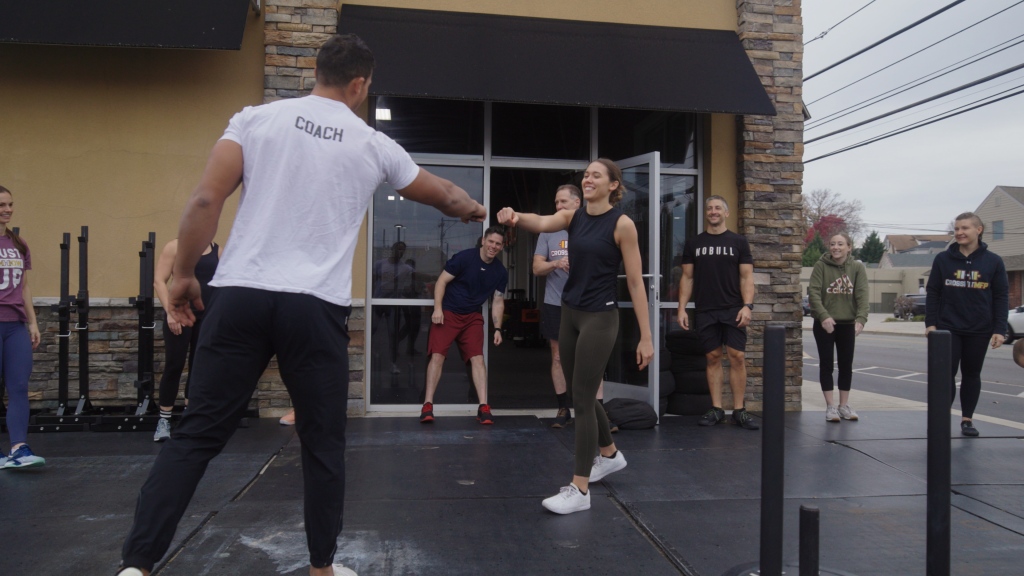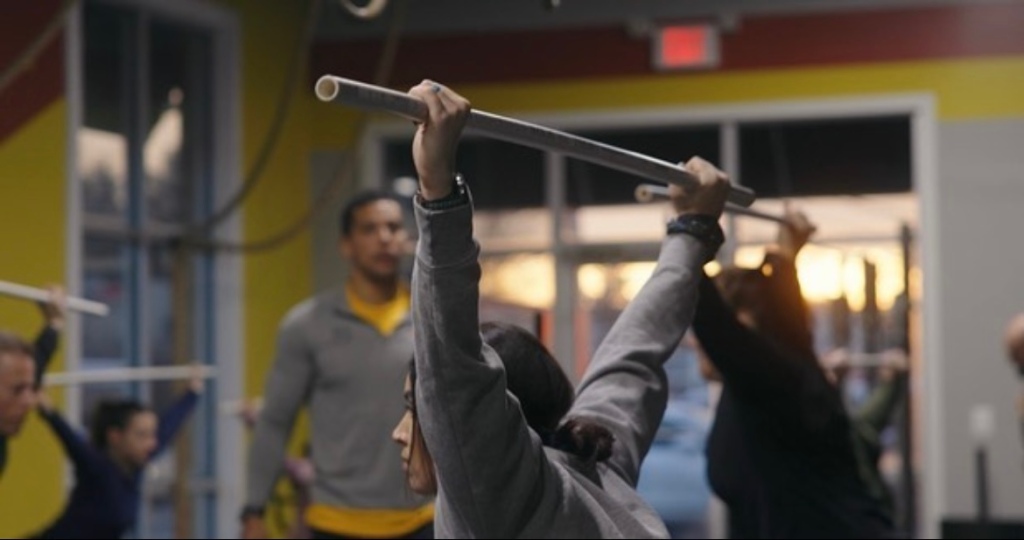Foreword from Coach Marco

A conversation of “I didn’t know this about you,” is one that people have engaged with me throughout the years. Specifically, this is in regard to my minor degree in Contemplative Studies, aka mindfulness education. Most are more surprised by the fact that mindfulness could even be a course of study, but at West Chester University, this was quite an intensive, insightful, and for me personally, a life-changing educational experience.
I not only felt called to this degree but knew that I could use my teachings to change lives in a more meaningful and impactful way. In some ways, it took a lot of courage, letting go of ego, and releasing any insecurities. This is because typically, this type of work can receive poor perspectives for its holistic point of view. A materialistic mindset looks at these practices as not approachable to a more mainstream way of applying mental, emotional, and spiritual care. Also, I was unfortunately one of very few men who would embark on this journey of learning mindfulness, as this type of work catered to the Yogic Female archetype (at least within the college-based education). For me, I learned to put those perspectives aside and to go all in with understanding the value of this way of being, thinking, seeing, and projecting.
Contemplative Studies consisted of a diverse range of courses. This included:
Yoga Level 1, 2 and 3
Tai Chi Level 1
Positive Psychology
Alternative and Contemplative Medicines
Eastern Culture Philosophies
Mind, Body, Health
Stress Management
As I loved and took all of these classes seriously, I can recall my favorite class, which was called, well…Mindfulness, who would have thought?! This class was quite extensive, as once a week we had a class with the director of the program, Dr. Donald McCown. Our class would gather on a Wednesday night, at the WCU Center of Contemplative Studies, for 6 hours, to practice the simple and powerful ways of applying mindfulness.
Our education during this class was minimally delivered by discussion with Dr. McCown. Most of the time, we were silent. We would meditate and train ourselves to be completely aware (mindful) of our body, thoughts, consciousness, emotions, space, sounds, and feelings. We practiced every little detail of being present in the moment. From mindfulness walks in nature, to mindfulness-based eating, practicing deep meditative states, to the mindful act of listening to others, we did it. This was no easy task, as sometimes we just practiced the art of solitude and silence.
My journey of completing this minor degree, and applying various forms of mindfulness were a continuation of my healing journey through cancer. As my illness taught me mindfulness from a much different perspective, I was learning to apply my wisdom from healing in ways I knew would be impactful for others in the future. This has stuck with me throughout the years and has resonated with those who are ready to be open to receive and to be vulnerable to the benefits of mindfulness.
I thought this intro was a perfect segway into Joe’s article on how mindfulness has helped him through his mental struggles. Joe’s story and journey speak to the very powerful basics of this practice of mindfulness and remind me of how I utilized this practice more than ever before throughout this past year. His openness to me throughout the past few months has allowed growth in both of our lives and motivated me to continue to project the meaningful changes that mindfulness provides. More importantly, his vulnerability and openness about his changes can be tools for so many others who have similar struggles in their lives. As a friend, coach, mentor, blog provider, and now running buddy to Joe, I am honored to have his story a part of the MFP Education Center he helped create.
Cheers to serving ourselves, and serving others!
Vulnerability, Mental Health, and Mindfulness: By Joe Yamulla
I’ve been wanting to tell my story for quite some time. In fact, I’ve started writing it several times – only to succumb to the demanding voices of insecurity and fear in my own mind. But recently, I have embraced the tremendous power of vulnerability. Being vulnerable not only helps facilitate my own healing but also offers a space for others to heal as well. We all need to heal in some capacity. Human beings are tricky… We put on a tough face. We smile, we laugh, and we love. But we also struggle. I struggle. It’s time to finally talk about that. It’s time for us to let go.
My Journey – Recovering from Debilitating OCD
Before I discuss mindfulness, I’ll share my story. For my entire life, I have suffered from one of the most misunderstood and misdiagnosed mental health disorders – Obsessive Compulsive Disorder (OCD). Historically, the conversation surrounding OCD has been wildly inaccurate and oftentimes harmful. In pop culture, many falsely recognize it as a quirky personality trait – a love of being tidy and organized! You probably have heard someone say “You’re so OCD!” in relation to something silly like your satisfaction from color coding. Please understand, that this is the opposite of OCD. In fact, it’s a harmful stereotype because it makes those who do have OCD neglect treatment because they don’t know what is wrong with them.
OCD is not an adjective. Nor is it a love for organization. It is a debilitating mental illness that stems from neurological dysfunction. OCD patients have excess activity in frontal regions of the brain – including the orbitofrontal cortex and the anterior cingulate cortex. I apologize for the neuroscience speak here – it’s okay to find it confusing. Basically, this means that because of the way an OCD brain is wired, people with OCD experience constant and repetitive intrusive thoughts, images, urges, or feelings. These are called obsessions.

Imagine a never-ending infinite reel playing in your mind of your biggest fear without any relief. Then, the brain’s neural pathways are firing away making you feel like this threat is completely real – causing tremendous sensations of discomfort and anxiety to permeate throughout your entire body. Naturally, the sufferer seeks to relieve the stress. Compulsions are the behaviors you do to attempt to remedy the perceived danger. Hence the name obsessive-compulsive disorder. But the cruelest part is that compulsions are futile and actually keep you stuck in the cycle of fear and anxiety. Compulsions fuel the “broken” brain – saying something along the lines of like “See! I told you that the threat was real. Good thing you took it seriously!”
Thus, the cycle permeates. Obsession – distress – compulsion – temporary relief – back to obsession. The goal of this article is not to be a psychology lesson. But part of my purpose is to bring awareness to the realities of OCD to help or save lives. Much of the conversation surrounding OCD in public is wrong because people with OCD are scared. Our minds are tormented with horrifying thoughts that go against everything we value. Many obsessional thoughts are taboo and uncomfortable to even mention. If you are interested in learning more about the realities of OCD, I’m happy to connect with you and discuss it in more detail.
The Beginning of My Healing Journey

For years I suffered in silence. My world was getting smaller by the day. My brain was improperly firing on all cylinders – making the fear feel as real as it can get. It’s difficult to describe the feeling, but it was akin to unrelenting fireworks of fear. I was unable to close my eyes to sleep. I had a hard time being alone. I could barely leave my house by myself. I truly was trapped in my own mind – desperate and hopeless. I knew I couldn’t keep living like this. My life depended on finding a way to get better and rewire my broken brain. My first step in my healing journey was talking to my amazing wife Nora about the details of my mental health condition. This was a big leap for me! I was so scared to tell anyone about what was happening in my mind for fear of being judged. This is why OCD is misunderstood. Thanks to Nora’s love, support, and motivation, I was pushed to find a way to get better – the beginning of my mindful, healing journey.
Learning How to “sit with it”.
The gold standard for treating OCD is a unique form of cognitive behavior therapy called Exposure and Response Prevention (ERP). ERP sounds scientific, but it’s a beautiful way of practicing mindfulness. Through ERP, you expose yourself to fear – whatever it may be. You allow your hyperactive brain to fire away – and purposefully let your anxiety and distress levels spike. And you do absolutely nothing about it. You “sit with it”. You mindfully observe every thought and every feeling, and you let them be there. It sounds simple but for someone with OCD, it’s terrifying. You feel guilty. You feel irresponsible. You feel like you are putting yourself or others in danger by not reacting. Remember that image of the OCD brain? Your brain creates a perceived reality that this is a significant danger, and you are tasked with completely leaning into it.
By consistently observing the thoughts and refusing to engage with them, you begin to rewire your brain! ERP requires you to get scared and do nothing about it. Thanks to neuroplasticity, your brain slowly begins to learn that these are false alarms and not real threats. It takes a long time. Recovery is brutal sometimes and not linear by any means. But eventually, the frequency and intensity of the obsessional thoughts fade.
The Art of Mindfulness – Part Patience, Part courage, Part Faith

For so many years, I was not okay. But today I am here as a survivor and a fierce advocate for mental health. I have adopted mindfulness as my lifestyle – my very state of conscious being. I am not cured of my OCD. Rather, it lives with me as my “dark passenger” as Dexter Morgan would say. But it no longer controls me. My once-small world has expanded to an expansive space filled with love, happiness, joy, and meaning.
Mindfulness involves being fully present. Take a moment to sit and focus all your awareness on the present moment. What do you see? What do you smell? What do you hear? Where are you? Who are you with? Notice everything but choose to engage only with the present moment. It’s a beautiful act of surrendering.
Let’s say you’re at the gym – this is a perfect space to practice mindfulness! When you are at the gym, you are directing all your attention to your movement. Your focus is your body, your muscles, the barbell, or even just how your feet feel on the ground. During this time, you may notice uncomfortable thoughts, feelings, or urges. You may notice feelings of sadness, distress, or anxiety. What’s important is that you notice all of it and embrace those feelings being there without judgment. You do not give the thoughts or feelings any added meaning or attention. You simply let them exist, just like the birds fluttering around you or the slight rain you may feel falling on your shoulder.
Mastering mindfulness is difficult because our thoughts and feelings are powerful. Trust me, I understand how a thought can hit you like a truck – transporting you to a completely different place emotionally and spiritually. Our inner worlds are vast and can never be underestimated. For that reason, mastering the art of mindfulness is one part patience, one part courage, and one part faith. You need the strength to let go and resist the vicious temptations of anxiety and fear. The strongest among us can lean into uncertainty, and fear, and move forward despite the discomfort they are noticing. Letting go is scary. It takes time and it takes patience. But when you muster up the courage to let go, your life truly begins.
How Can You Practice Mindfulness?
No matter who you are, mindfulness can change your life. It’s an ancient practice that can manifest in many forms. Take a moment to embrace silence. We live in a distracting world and distractions oftentimes are coping mechanisms. Ditch the phone to start your day and spend some time outside focusing on your breath. You can journal. Do anything to cultivate your awareness of the present moment and embrace everything about it– the sensations and the thoughts. It might be uncomfortable but don’t run. Recognize and accept that you are feeling uncomfortable. Drop all judgments of thoughts and feelings and allow them to exist. If you have not attended an Infinity class yet with Coach Marco, I encourage you to join us. These classes offer a perfect space to practice mindfulness. Eventually, you’ll grow to the point in which you live in a constant, mindful state.
Ask for Help. Get Vulnerable. You Deserve Love and Happiness
I struggled for a long time and did my best to cover that up. Understand that you do not have to suffer. You deserve happiness. You deserve love. You deserve peace. Talk to people and get the help you need. Recovering is a long journey. I still struggle and that is okay. It’s time for a cultural shift for men and women to lean into being vulnerable and honest about their thoughts, feelings, and experiences. Start by being open and honest with those who love you. I am so grateful for my wife Nora – who has stood by my side and has loved and supported me throughout every step of my journey. Love fuels us. It inspires us to keep moving forward despite how long and arduous the voyage seems. Nora, if you’re reading this – I wouldn’t be here without you!
Reflect and Think – Are you Ready to Let Go?
I hope that my story serves a few different purposes. One, I want to bring more awareness to OCD. It truly is a horrific, misunderstood condition, but trauma and struggle are everywhere and do not discriminate. We are all damaged in a sense. Mental illness, loss, hardship, grief… a life worth living cannot avoid pain. It’s time for us to have more compassion, love, and understanding towards each other. I’m putting my guard down, and I hope this inspires you to do the same. My journey has not been easy, but it’s led me to a place of gratitude and purpose.
Remember, letting go is an art. Fundamentally, the very essence of being human is an art. Approach mindfulness with patience, and courage, and get ready to take one big leap of faith. Your own journey awaits.






Leave a comment